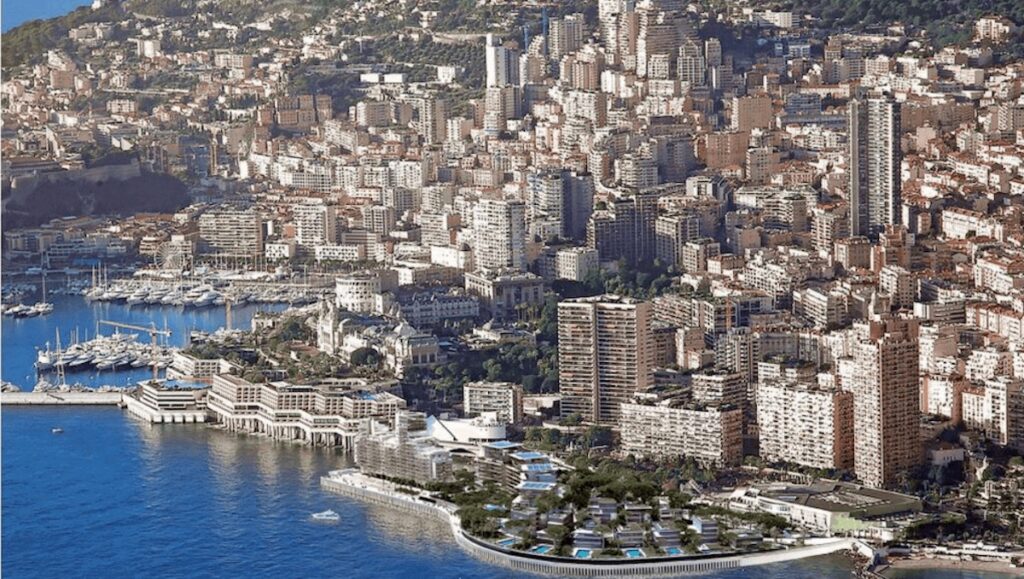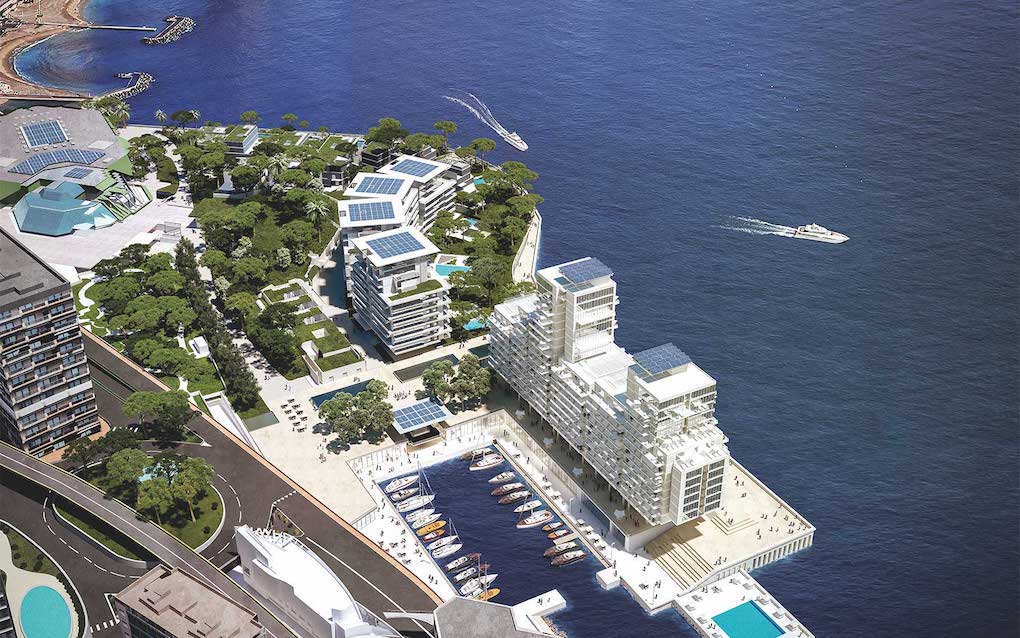Mareterra – ‘most expensive real estate in the world’ according to Financial Times

With the ambitious Mareterra district due to be officially opened early next month, the Financial Times published a feature article about the development. Properties designed by Renzo Piano, Tadao Ando and Lord Norman Foster have pushed prices up to €120,000/m2 in some cases. And all have been sold…
Monaco ceded 95% of its land to France in 1861 in exchange for independence. Its reputation for security and quality education as well as tax benefits make it incredibly attractive for the super-rich. But Monaco’s only options for growth to accommodate them are up, with high-rise apartment blocks, or out over the sea. Hence the new district of Mareterra, ‘the most expensive real estate in the world’, according to the Financial Times, which was completed ahead of schedule and officially opens early next month.
The article quotes the developers as saying the land itself cost £1bn, with a further £1bn spent on construction, thanks to investment from nine families, all Monegasques (Briantis, Casiraghis, Pastors) or Principality residents.
It isn’t the Principality’s first land reclamation project. The Larvotto was created in the 1960s. Fontvieille added some 23 hectares in the 1970s, then Renzo Piano’s promenade came as an addition to the Larvotto in 2021. Monaco’s footprint is now just under 2 km2. Mareterra adds an extra 3%, at a price tag of around €2 bn, with 110 apartments, four town houses and 10 villas, says the Financial Times. Half of it is public domain including a 500m promenade along the seafront.
Over 40% of the district is green, with nearly 1,000 trees and a typical Provençal maquis at ground level, as well as ponds, paths and bridges, giving it the feeling of an oasis compared to the rest of highly mineral Monaco.

It is our first national eco-district
Prince Albert II
The Sovereign told the Financial Times, “It is a project that reflects Monaco’s enduring promise to safeguard the Mediterranean’s unique beauty and biodiversity while addressing the needs of a modern, sustainable principality.” It meets Haute Qualité Environnementale sustainability standards both in terms of land construction and ongoing operation. There are 9,000 m2 of solar panels, heat pumps will power heating and cooling and rainwater will be collected to irrigate the green spaces.
Renzo Piano is back at the Prince’s request, delivering ‘Le Renzo’, a 62m high, 125m long apartment building that looks like a huge cruise liner, ‘floating’ five metres about the ground on supporting columns. Shops and restaurants will occupy the space beneath it. Its 50 apartments, all at least 400 m2, include a penthouse quadruplex. The FT article suggests there is a 50/50 split between purchases by existing residents and newcomers.
The views are stunning in all directions and seem likely to remain so, at least on the sea-facing side. “The demand for large family homes has been on the rise,” Ianis Ennaji of Barclays Private Ban Monaco told the FT, and families applying for residency must now have a property that can accommodate all their members. The large Mareterra apartments certainly tick that box.
Environmental considerations prior to construction
The FT article lists a certain number of environmental measures that were carried out in advance of the project taking off. Fishermen from Monaco to Toulon helped relocate bass from around the site to further down the coast. A 500m2 patch of Posidonia was rehomed nearby, and a coral reef was protected against possible damage. Scientific experts supervised these efforts and several environmental surveys were carried out to ensure the project respected or improved the marine environment.
Then, the land had to be reclaimed, dredging down to a rock ledge at 50m deep, in 2018. A stone embankment was then built to support huge concrete ‘caissons’ creating a belt that was filled with sand. The caissons were made in such a way as to provide a new home for marine wildlife.













